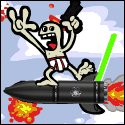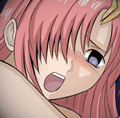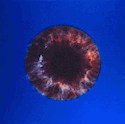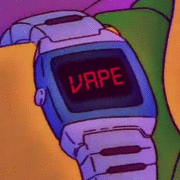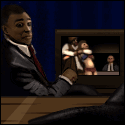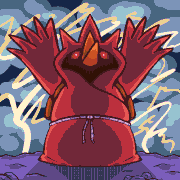|
I've found that I really like the OOC JPEG output of my Fuji X-T2 for daylight scenes. It works great (with the need to shoot RAW for occasional slight post-processing) for pictures of people in mixed, low interior lighting as well. But I'm having more trouble getting results I like with it for night landscapes. It's a perennial issue for me and one of the major reasons I like to shoot night landscapes on film. First, two film examples:  Not a great composition but I like the tonality. The film can't save all the highlights and get good shadow detail but it has a naturalistic look that I appreciate.  Even when I have to process, scan, and correct the color myself, I'm happy enough with the results. But I can't really get that close with the Fuji. Especially when combining bracketed exposures, I'm finding it hard as hell to not get my results looking like bad CGI.  This one is from a single exposure. Shot RAW, processed in ACR by setting to the Classic Chrome profile, custom WB, Highlight/Shadow adjustments, HSL and Split Toning to dial down the yellow in the highlights and magenta in the midtones, and a mild RGB curve to tweak contrast. It looks pretty digital, but I like it ok.  With this, I used Merge to HDR Pro in PS to combine four RAW files. The lights behind the window were so much brighter than the surrounding scene. It looked like a bad video game environment rendering at first, and the results of my further adjustments... changed that, but I'm still worried that it looks over-processed in a different way. ACR default profile, uniform custom WB, and Highlight/Shadow adjustments for all RAW files before loading into PS. Merge to HDR Pro, 32-bit, tone in ACR (just used this step for some HSL adjustment). Then I went hog-wild with adjustment layers in PS. Individual R, G, and B curves, Color Balance for shadows, midtones, and highlights - all applied selectively using Apply Image and adjusting the layer mask curves so that I could affect a kind of more-detailed split tone. Try as I might, I can't seem to get the kind of 'clean warmth' in all my digital night shot highlights, especially that HDR composite. I wish there was (or I knew of) an adjustment that does something like Hue/Saturation but only applies it to warm or cool highlights/shadows/midtones... the idea being that one could easily e.g. make warm highlights cooler while not making cool highlights turn neon blue. The way I'm doing it right now, it seems like my HDR composite results either look crunchy and over-processed or like stills from an unprocessed video shot with a log gamma profile. Here's one more example. A complete failure of an attempted night shot with the Fuji. This is another composite. Processed using the same PS tools as the other composite (the close-up of the same building):  It looks like an architectural rendering. Any ideas on how I could get it to look more like those film examples? I've tried processing with VSCO Portra presets, but the results are about the same. Is something like this guy's stuff the best I can hope for with the Fuji at night? If so, does it look to you like there are any techniques I haven't listed that this guy is using? SMERSH Mouth fucked around with this message at 04:47 on Mar 21, 2020 |
|
|
|

|
| # ? Apr 24, 2024 02:25 |
|
When you pull up the shadows so heavily you are recovering/contrasting the texture there at the cost of removing overall contrast in the scene, which gives it an artificial look. HDR is more effective when two parts of your scene need different exposures and both are worth preserving, but I don't think that is the case in your images. Shooting indoors and at night tends to be more difficult because the quality (not quantity) of light is often worse, which isn't a technical problem the camera can overcome. Jpegs of night scenes are often uninteresting because exposing for the brighter/more interesting parts of a scene is a creative choice the camera can't make.
|
|
|
|
SMERSH Mouth posted:
Could you do a Hue/Sat adjustment layer and add a luminosity mask to it so it only affects the highlights? You could pick the warm tones or the cool tones and just have them affect the tones in the highlights of the photo.
|
|
|
|
Do you guys have any Youtubers that have recordings of them editing photos you like?
|
|
|
|
huhu posted:Do you guys have any Youtubers that have recordings of them editing photos you like? Adam Gibbs has some videos of his editing of landscapes, it's not generally doing anything extreme because he likes a more natural style, but I've learnt a bit from it. Specifically I'm trying to use more local adjustments (dodging and burning for example) in a targeted way rather than global adjustments. A consequence of this technique is that you have to actually have an idea of what you want out of the image before you start, because the adjustments are usually pretty targeted you have to have a reason to do them, not just dragging sliders up and down until it looks good.
|
|
|
|
Blackhawk posted:Adam Gibbs has some videos of his editing of landscapes, it's not generally doing anything extreme because he likes a more natural style, but I've learnt a bit from it. Specifically I'm trying to use more local adjustments (dodging and burning for example) in a targeted way rather than global adjustments. A consequence of this technique is that you have to actually have an idea of what you want out of the image before you start, because the adjustments are usually pretty targeted you have to have a reason to do them, not just dragging sliders up and down until it looks good. That actually sounds pretty useful. I shamefully usually start up by open palm slamming the "Auto" global adjustment button and then add my own tweaks from there.
|
|
|
|
Does anyone have suggestions on how to start tagging photos? Programs to use, good catagories for keywords, etc? My wife has tens of thousands of photos at this point, and uses lightroom for editing, but hasn't done any tagging yet. I don't know much about photo editing, I was thinking we could both install adobe bridge and work on tagging them (all the photos are on our server) once we'd agreed on a tagging scheme.
|
|
|
|
As a hobbyist I can't imagine having multiple tens of thousands of photos I've taken that I felt were worth keeping, I maybe keep 200 a year and only publish a few of them. Are you referring back to them often for edits or more just to look at them?
|
|
|
|
I put my photos into folders by year then by location if outside my home city. Home city photos get broken down with other categories. I wouldn't bother manually tagging that many photos. Guaranteed you're going to be inconsistent about it.
|
|
|
|
jarlywarly posted:As a hobbyist I can't imagine having multiple tens of thousands of photos I've taken that I felt were worth keeping, I maybe keep 200 a year and only publish a few of them. Are we NOT all digital pack rats?
|
|
|
|
jarlywarly posted:As a hobbyist I can't imagine having multiple tens of thousands of photos I've taken that I felt were worth keeping, I maybe keep 200 a year and only publish a few of them. huhu posted:I put my photos into folders by year then by location if outside my home city. Home city photos get broken down with other categories. I wouldn't bother manually tagging that many photos. Guaranteed you're going to be inconsistent about it. She likes having fairly detailed collections from trips, I don't think it would be useful to suggest deleting more than the 'bad' photos (which she is intending to do from the older ones). Also hard drive space is cheap.
|
|
|
|
Could be worse than a couple of hard drives, my grandmother has a hall closet filled with slide reels my grandfather left behind. Kodachrome sure was a beautiful film.
|
|
|
|
The Vikings posted:She's been taking photos since ~2009 but only really started editing seriously since ~2017 or so. Now that the most recent ones are finished with editing she's planning to go back to the earlier ones and edit them. We do look through them occasionally for ourselves or to share with other people, but she also wants to be able to use them for other creative things. Should be able to script the folder names into the tags.
|
|
|
|
In my ongoing quest to evolve from a photographer to a humanoid camera, I keep finding these Instagram feature pages with photos that I personally really like. Obviously others like them too, and it's trendy. The best way to describe them is cinematic and atmospheric. I'm sure some are film shots, but also likely digital with a good amount of time in Lightroom. Lens choice and lighting probably play a bigger part, and my guess is that it's really not camera dependent, although having the right depth of field (ie. FF vs Crop), focal length and lens play a big part in terms of visual texture, but maybe not? Maybe simply slapping a ProMist filter on will do it? As someone shooting with an X-T2, I've struggled endlessly to recreate a similar style, and not really sure how to approach the look, tonality and dreamy feel of these. Anybody have an idea of what process shots like the following go through, and what type of lens or camera? (I've done some digging and can't seem to find much info about them, and of course "trade secrets" or "pay for my courses/presets" is the typical response if you ask anybody these days for tips) https://i.imgur.com/RYXyFV4.jpg https://i.imgur.com/tsjqLkK.jpg https://i.imgur.com/z4pdsEK.jpg ianskate fucked around with this message at 20:21 on Sep 10, 2020 |
|
|
|
I thought it might be fun to give a try, so I did a quick edit of a raw from dpreview (original): For the dreamy look I tried turning down the contrast on the low frequency stuff, but left the fine detail. And a little bloom. Then messed around with the shadow color and added some grain. I can go into more detail if it is inline with what you had in mind.
|
|
|
|
Dang, that's a pretty good representation I think. Also the source image is a good starting point, enough bokeh with some OOF glow / silhouetting around her hair which definitely adds to the effect in the appropriate way, so I think you're definitely hitting it correctly. I'll see what I can come up with in LR, but it all sounds relatively straight forward (if by bloom you're referring to pulling Dehaze to the negative, then I think I've got it more or less). But would surely appreciate the steps either way, maybe my approach has just been plain wrong all along. Thank you!
|
|
|
|
More specific advice might not be too helpful, as I am mostly familiar with a different raw developer, darktable. It is freeware though, so I've uploaded the side car here. If you have darktable, download the original raw, and put the sidecar in the same folder you can see the exact edits I made. I'm not sure if there is an exact equivalent to wavelet contrast editor (called contrast equalizer in darktable) in lightroom, but I believe the clarity slider contrasts the middle frequencies, so if you turn clarity down some it should get you part of the way. You may also need to adjust the overall contrast down. The other changes I made: Raised the exposure about a stop. An rgb curve (each channel edited separately) to warm the shadows and midtones. A tone curve to raise the highlights and midtones, and lower the shadows. Desaturated yellow and green pretty heavily. Add some fake grain. Lens choice can definitely get you an interesting look that you can't really replicate in post, not just depth of field but the way the lens renders, the quality of the bokeh, color, contrast, etc. The three examples you provided have pretty smooth out of focus areas, focus/sharpness is pretty good, so they look like modern lenses/cameras to me.
|
|
|
|
Right on, thanks again! I didn't have have Darktable and of course there's no XMP compatibility (thanks Adobe) but I went with your suggestions in ACR and think this is also in that direction. Although I did download Darktable because I've always meant to check it out, so I'll have to see your exact settings when I have time later. ACR version in PS. It's a little brighter but think it has some of the qualities... but let me know if you feel the same way, because everybody sees things differently. 
|
|
|
|
I think the green to yellow/orange/brown looks good, and is definitely fitting with the style of images you posted. You went a little lower contrast than I did, but it might fit what you had in mind a little more. I think style parodies are a fun way to practice. You don't have too much latitude editing jpgs but I sometimes do it the other way and try and destyle a photo. It can give you an idea if you enjoy the photo because of the way it was edited or some inherent quality. Besides dpreview and photographyblog, who do gear focused samples, there is also this one which provides some nice raw samples with editing practice in mind.
|
|
|
|
I've got a ~$2000 2 year old gaming desktop that seems to be able to run Lightroom as well as my 2015 Macbook Air. Are there settings/things I should be doing differently? I feel like I shouldn't have to wait so long for things like previews to be generated and thumbnails to load.
|
|
|
|
Are you loading the images from a fast storage medium? Is lightroom utilizing your graphics card correctly, no driver issues?
|
|
|
|
Files are on a ~2 month old SSD, "Use Graphics Processor" setting is set to "Auto" and my graphics card is displayed with "Your system automatically supports full acceleration". I don't think I have any driver issues.
|
|
|
|
Files as in the images? What about the actual lightroom install and config files? You can also turn on 'create previews at import'. The import will take longer but it means it won't have to do it later.
|
|
|
|
Check your cache locations as well as catalogue locations and app files, also what are the actual specs (cpu/ram/gpu.)
|
|
|
|
Iím not sure if this is the best place to start a discussion of DAM/editing software itself, or if I should start a new thread on it. If we want this to be just the place to talk about technique, then thatís fine too. Iím currently trying to figure out a good way to manage/process all my photos since I have them all in one spot but only haphazardly have picked out the ones I liked. I also upgraded by computer lately and want to choose some software for photo management. This is my overview/considerations, based on what I want to do. Hereís my particular expected usage, to explain my perspective: * I have several thousand files, going back over at least a decade. The majority are in Pentax RAW (DNG) files. * I prefer to have the originals archived but accessible if need be, but definitely not what I would normally browse through in a 'library'. If I could search them (after group tagging or using AI or whatever) thatís good, not required. * Along those lines, Iíd want a way that would allow for organization of files in the software without necessarily moving the files around/loading them into a database. * I donít like to heavily process my photos, but would like to tweak a few if needed. Since I shoot a lot while hiking and havenít always had sealed lenses, dust removal/spot fixes are a really common batch fix I would want. * Iíd prefer if edits/tweaks should be easy to go back to, to see what I did. Occasionally I'd like to have multiple edits of the same shot. * I do not like subscriptions for anything, and would plan on keeping this software for multiple years, and thus would want to buy a perpetual license, or use something FOSS for the convenience. Iím on a Mac, so this will be biased toward software available for that platform, though I've listed here when I could find which platforms are supported by which software. Here's the list: Adobe Lightroom - The big player in the room, of course. I havenít used it on my own stuff, but I have some familiarity from helping out a friend who uses it. It would probably serve my needs and thereís plenty of help to be found. The main problem, though, is the expense it would be for me. $10/month (or in some various bundles), cross-platform[?]. Capture 1 - Seems to be quite fancy, but oriented more at professionals who are trying to do intense [post-]processing. Full license is $300 (current version only),or $180/year. There are also some products aimed at Fuji/Sony owners. Windows/Mac only. ACDSee - Sounds like an interesting alternative to Lightroom, although Iíve never tried it. Most of their software is Windows-only, with only one option for Mac. The fact that the Mac edition seems to be a different product makes me think of the days when the Mac version of Photoshop Elements was several versions behind the PC. I also get the sense theyíre pushing more toward this being subscription-only. $140 for Ďlifetimeí license (one year, but you keep the software), or $90/year. Luminar - Heavily touts its AI, with all kinds of ways to manipulate your photo to whatever you want it to be. Iím more interested in keeping them as documentation, not creating something from them. Maybe it has other features that are good, since Iíve occasionally heard that itís pretty decent overall. $80, Windows/Mac only. DXO PhotoLab - For once, the image processing/AI features touted here are not about changing your photo so much as Ďfixesí such as improving detail or blurriness. That approach appeals to me. The management side seems light but workable. Itís on the expensive side, though, at $200 for the license. They also have DXO PureRaw (which is just RAW processing, but $130). Windows/Mac only. AfterShot Pro - Focused on the Ďworkflowí of processing photos, and wants to compete directly with Lightroom. This feels a little like older software, especially in its feature list - but itís also one of the few commercial offerings to support Linux, so itís not stuck in its ways. Itís probably one of the ones I will try. $80, cross-platform. Lightzone - What Iíve used now for a while when I need to, but itís not what Iíd want to stick with. I do find the basic editing tools easy to use. The library management was never something that really worked for me. Also, while it was recently updated, itís hard to say itís actually in active development. Free, cross-platform. Darktable - Iíve poked at this but donít like it much. It has a fair amount of features, but the UI feels kind of painful to me, at least for editing. I can see how someone could get into it over time, though. It doesn't seem that different from Lightzone in terms of management - kind of minimal. Free, cross-platform. PhotoDirector - The tagline says ďTurn photos into artĒ which once again is not what Iím interested in. No idea how it deals with managing the library. $100 for (limited?) perpetual license, or $40/year to get all features & upgrades.Windows/Mac only. Digikam - I keep thinking about this option but havenít actually used it. It seems focused on library management, and promises to work really well with very large photo libraries. The editing tools donít seem to be that great, and from what I can tell the RAW processing isnít much (also it seems like youíre only meant to process the RAW file once, on import). Free, cross-platform. RawTherapee - A passable RAW processor, with no management features from what I recall. It kind of reminds me of the older Adobe Camera RAW. Free, cross-platform. Raw Power - Made by ex-Apple employees in what may be an attempt to bring something like Apertureís abilities to Photos.app. While itís said to work as a standalone, it seems intended for those using Appleís Photos more heavily, and would use it as an extension. Reasonably priced at $30, although it seems library management would be through Photos. I prefer to use Photos minimally, and only for the occasional photos I take on my phone. Iím not sure I want to try and integrate the library, especially as I avoid paying for iCloud. Mac & iOS only. Darkroom - Seems to be a plug-in for Photos, as with Raw Power. I havenít looked much into it, but itís probably intended more at people wanting to do a bit of post-processing on iPhone while also being capable of dealing with RAW & images from other sources. Also edits video. Free (IAP of $10 or $24/year), Mac/iOS only. Affinity - Photo editor with a fair amount of graphic design tools, so it seems to be more of a Photoshop replacement than a Lightroom one. It does promise RAW editing tools. Big feature seems to be its claim to work fast with large files. $55, Windows/Mac/iOS only. Any comments or personal experience with this software is welcome, or you can add to anything I might have missed.
|
|
|
|
I use darktable. There was a little bit if a learning curve, but I really like the customizability, and being able to stack adjustments with different masks lets me keep my editing nondestructive. I would definitely recommend it, but if you want light edits that look good right out of the box it definitely isn't the way to go.
|
|
|
|
I shoot with a Fuji XH1 and I just started experimenting with the free version of Capture One that Fuji users can use. Working from the raw seems like significantly more work for what is usually not any better outcome (sometimes the Capture One output actually looks worse than the straight Fuji jpgs), unless it was a marginal photo to begin with, and then altering light levels can turn it into a slightly better one. Am I doing it wrong?
|
|
|
|
There is a lot more latitude in editing white balance and exposure. There are typically tools available in camera to raise shadows/compress dynamic range/etc in camera, but with raw files you can adjust later instead of being stuck with what you have and a lot more fine tune control. And using masks to adjust specific areas, remove elements, correct perspective issues, crop and rotate on jpgs always means reencoding and adding another layer of jpg noise. And no in camera jpg does a great job with noise reduction and sharpening. Typically not an issue if you are sharing it on your phone, but it can certainly be obnoxious, and can leave a lot on the table in terms of detail. I find sorting, comparing, trimming to be the most intensive parts of editing, which applies to working with jpgs as well. If you set up a good workflow you can run through things in batches without much extra effort.
|
|
|
|
How do I go about setting up a workflow and doing things in batches? With jpgs, I use IrfanView to drag my cropping box, two keyboard shortcuts to trim and save as, and scroll wheel to next photo (or just skip ahead 5-10 photos until I get to another one I like, recently in an afternoon I shot ~3500 photos and considered ~400 of them worth keeping). Only takes a few seconds. Are noise reduction and sharpening part of the autoadjust tool in Capture One?
|
|
|
|
Anyone know how to recover an old Lightroom license? Is on my old desktop which is kaput, but I really dislike repaying for software and ESPECIALLY via a subscription when I already have the license. If not, are there any free alternatives that work at all? Looking mainly for organization and minimal raw processing. *edit* drat, I even found my serial number in an email from a decade ago somehow, but it would appear Adobe has removed all downloads of Lightroom 4? Anyone have an install file laying around for posterity? Bob Mundon fucked around with this message at 14:36 on Feb 14, 2022 |
|
|
|
Maybe this is a dumb question but when it comes to contrast and exposureÖ itís entirely subjective isnít it? I donít know if I have a question, but I suppose Iíd love to read or hear what professionals have to say about them. What goes through their mind etc.
|
|
|
|
While your final output is subjective from an editing standpoint there are benifits to shooting flat and with an exposure that captures the most information possible. If you overexpose and decide later you want to bring more information into the highlights then you're out of luck, that's clipped out of existence. Likewise if you go really punchy in the contrast and decide you want to bring in more fine tonality then that is lost too.
|
|
|
|
Bob Mundon posted:Anyone know how to recover an old Lightroom license? Is on my old desktop which is kaput, but I really dislike repaying for software and ESPECIALLY via a subscription when I already have the license. Giving darktable a whirl, actually pretty good so far considering it's free. Is there a catch using that I'm not seeing?
|
|
|
|
Kangra posted:Iím currently trying to figure out a good way to manage/process all my photos since I have them all in one spot but only haphazardly have picked out the ones I liked. I also upgraded by computer lately and want to choose some software for photo management. I use ACDSee, having started with Lightroom back in the day (version 3) and moving through AfterShot Pro and a brief fling with RawTherapee. I've always heard good things about Darktable but I've never actually used it. The problems I had with AfterShot, and the problems I've not had with ACDSee have been issues specific to what side of the Windows/Mac divide you're sitting on. AfterShot was buggy and crashed, hard, way too often, and I fear you may be right about ACDSee's Mac version being behind the leading edge of the Windows version. I've accepted that kind of behind-the-front-lines approach in my purchase of the middle tier of ACDSee, "Professional" rather than "Ultimate". The main difference between those tiers is that A) the support is all targeted at Ultimate so if you have a problem or want to learn from a tutorial, it might not apply to your version and B) Ultimate lets you edit with layers, which is pretty useful but I'm not prone to over-editing my photos. At least 99% of the edits I make in ACDSee are basic, global edits like contrast and noise reduction and fiddly little spot removals. The copy-paste settings feature works very well and lets me apply the exact same edits to as many pictures as I feel like, and I can choose which edits to copy (often, I de-select the geometry options, cropping is specific to each shot but brightness or spot-removal might be consistent). RawTherapee, at least when I used it, loads the full version of each photo only when you select it in the strip, so tapping the right arrow through the 200 photos I shot yesterday takes a long time, just sitting there tapping a key every little while when the pixels shrink. Lightroom, Aftershot, and ACDSee import the whole folder, which if it's a large folder gives me time to wander away from the computer for a little while. Obviously this is highly dependent on the computer and how it's set up and this annoying delay was from a few years, and a few computers ago. Might not be an issue for you. My current desktop setup I bought a year ago imports several hundred raw files in about 30 seconds from the spinning disk I dump from camera onto, the program files for ACDSee are on a SSD but I don't know if that makes a difference. Tapping through photos in Develop mode comes with a very short delay, less than a second. It's noticeable but I don't mind it. EDIT: I remembered another thing about RawTherapee - when I was trying it out, several years ago, there was no spot removal function. The heavily-bearded Unix types in the open source discussion boards were, from what I could interpret, planning to implement such a feature but the work was going slowly. I hope they got it done. ExecuDork fucked around with this message at 02:26 on Mar 1, 2022 |
|
|
|
Megabound posted:While your final output is subjective from an editing standpoint there are benifits to shooting flat and with an exposure that captures the most information possible. If you overexpose and decide later you want to bring more information into the highlights then you're out of luck, that's clipped out of existence. Likewise if you go really punchy in the contrast and decide you want to bring in more fine tonality then that is lost too. thankfully with my modern camera, unless there is a shitload of contrast in the scene, I can capture most of it in the shot. the key is the subjective use of exposure and contrast for effect in the final image. I suppose I just wish there was a book or something I could learn from.
|
|
|
|
I liked using quick collections in lightroom Classic. I've since moved to the Cloud version and I'm not seeing a replacement. What do you guys do to replicate the behavior? Can't google for poo poo because the naming of Lightroom/Cloud is dumb.
|
|
|
|
This is an update to my post from a year ago, on various DAM/editing software (mostly Lightroom alternatives). One thing Iíve noticed is that the Ďsubscription-onlyí model doesnít seem to be sticking. Several of these have preserved the Ďbuy one version (and maybe get a year of updates) and keep ití option alongside subscriptions. Both have their upsides for different kinds of users, so Iím glad that it doesnít seem all headed in one direction. Something I also didn't realize at the time was that I kind of need to have the ability to split out multiple 'libraries', or at least have some separation for a certain set of photos. I do some editing of photos for my job, but I cannot have those mixed in with my own personal library. So I do need something that will probably be able to work on a group of photos and keep them distinct, even if it's just by having them on a different drive or folder. Adobe Lightroom - Still up there at the top of the list, still rather expensive subscription required. I donít think itís a great choice for amateur photographers unless you can afford it. Havenít tried these in the last year (or ever, for most of these): Capture 1 PhotoDirector DXO PhotoLab RawTherapee Raw Power Darkroom Affinity Lightzone - I havenít quite gotten rid of this, as it remains easy to use for me, and has served me well for some of my smaller work (and particularly stuff thatís job-related that I really donít want to mix with my personal library). Though at this point I think itís only possible to get it via Github, and optimistically itís barely in maintenance mode. Luminar - Took a closer look at this, but I havenít really tried it out, as it seems to be very light on tweakable features. It is more designed to have things handled by the ĎAIí tools. That does make for a clean and simple interface. But I get the feeling that this would only serve part of my needs. ACDSee - Recent updates to the Mac version have seemingly improved this quite a bit since I last checked it out. The DAM capabilities (with auto-sorting by date, and tag sets) appear to still be the best feature. Yet it still lags behind on the Mac, with only one option, no Ďproí version available, although the price for the Mac version is indeed cheaper. It also has a ĎWindowsí feel to it, but that doesnít bother me all that much given how customized the UX design is for these tools. AfterShot Pro - I did try this out for a while. The good things were that it is definitely well-designed for the Mac, and well-optimized, too, since it ran really fast even on my old hardware. I didnít quite love the organizing tools, though they were fairly okay. The editing tools felt somewhat limited, or at least moderately difficult to get all that I wanted. Darktable - Iíve realized that I probably dislike this because zero effort was made to actually port it to the Mac outside of making it function. For a while I actually thought it didnít allow non-contiguous selection because that only works off the Control key. I think as long as youíre using Windows, itís a nicely-done editor. Digikam - I have used this off and on for some time now. It actually has a lot of features beyond DAM, but they are tucked away in weird corners (like thereís a whole slew of filters hidden in one plug-in). It reminds me a lot of the GIMP in being capable but clunky. I do rather like the browsing/organization tools, and the batch processor is really nice. One downside is that the interface is a bit noisy, and seems to want a lot of screen space, so it feels constrained when working on a laptop. Iíve considered using this and linking in an external editor for heavier tasks. However, itíd be painful to split into multiple libraries, and thereís the issue that dealing with RAW requires an Ďimportí step for each editing version. On1 Photo Raw - Somehow this never popped up in my overview last time. Although I see in my earlier notes somewhere that I added it with a question mark; I think at the time Iíd mistakenly thought it was only available as a PS/Lightroom plug-in. They do offer such a thing, but this is a full organizer and editor, and indeed includes some of the features (like de-noise) that would be (or used to only be?) in a plug-in. Latest versions seem to tout more ĎAIí features that most reviewers feel are half-baked anyway (they seem super proud of 'sky replacement', enough so that it has its own tab in the editor tools). Oddly enough, itís actually the one I think Iím going to go with. The editing tools are not extensive, but seem to be just enough to suit most of my needs. The browser/management is fairly functional - maybe not as good as ACDSee or even Digikam but they will do. It works using 'on1' sidecar files in the source directory which I can be okay with. The browser tool is decent, and switches modes pretty easily. I also like the Export tool a lot. The local adjustments/spot fix is quite good. The UI could be better, but it'll do. I did find some minor annoyances in the tools; sometimes I get Ďstuckí in a tool and end up over-tweaking. The adjustments are also not quite as fine as Iíd like at times. It runs a little bit slow on my machine (which, fair to say is over five years old and outdated). Iíd say itís slower than AfterShot (which runs great) but not as slow as Digikam (which was nearly impossible to preview anything without waiting seconds at a time). I am sometimes waiting on it for it to update, but not often. At least one time the preview didnít work correctly, though that was when I was using a Ďpresetí and Iím unlikely to use them anyway. I posted some shots over in the Low-Effort Zone that give some idea of the tools, but it's not a detailed review given they are all jpeg conversions.
|
|
|
|
What the gently caress is going on in the background?? Is it a mirror? Another dog?
|
|
|
|
anyone have a setup they like for using a MIDI controller for Lightroom? i tried https://rsjaffe.github.io/MIDI2LR/ and some similar plugins with a https://www.sweetwater.com/store/detail/LaunchContXLBK--novation-launch-control-xl-controller-for-ableton-live but ran into issues with it sorta being more trouble than it's worth, between lack of a good mechanical zero (because the control surface is kinda chintzy) and a bunch of issues translating values: - CCs did in fact act like MIDI CCs, in that they would keep updating exposure to X even though exposure was already set to X (Lightroom would continuously flash the "hey! exposure value updated!" overlay). this seems like something the software should handle (if the CC hasn't changed from its previous value, don't send an update to LR) but doesn't. - Some settings wouldn't track correctly. CC value ranges don't absolutely map to LR value ranges, but some settings would seemingly have nothing other than a single min/mid/max value. - Lightroom would get overwhelmed with inputs and seize up, seemingly trying to apply "exposure +0.3", "exposure +0.5", "exposure +1" "exposure +2" all in sequence and then render them, rather than just going to whatever the rest value was. lack of motorized faders is also annoying when jumping between images, but IDK if i would want to try and get one of those if the other issues still exist. it'd be nice to have to only buy one piece of gear for both MIDI and photo work, but the MIDI->LR values translation landscape seems kinda iffy based on first impressions
|
|
|
|

|
| # ? Apr 24, 2024 02:25 |
|
Qtotonibudinibudet posted:anyone have a setup they like for using a MIDI controller for Lightroom? i tried https://rsjaffe.github.io/MIDI2LR/ and some similar plugins with a https://www.sweetwater.com/store/detail/LaunchContXLBK--novation-launch-control-xl-controller-for-ableton-live but ran into issues with it sorta being more trouble than it's worth, between lack of a good mechanical zero (because the control surface is kinda chintzy) and a bunch of issues translating values: I don't do a lot of digital these days, but I have a Behringer X-Touch Mini that works well with MIDI2LR. It's basically just to have the knobs for adjusting all the sliders instead of having to dink around manually with the mouse and take my eyes off the image, makes it much more intuitive and is well worth it IMO. I used to have VSCO presets on the buttons but had a hell of a time figuring out how to re-do the shortcuts after a computer crash. I don't feel like I'm missing too much not having motorised faders, I just set "push knob down" for "undo changes made to this value".
|
|
|







